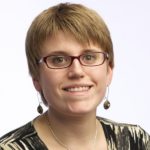Kids and math. They just add up.
At least, that’s the message from Educational Services District 112, which is using a grant to improve its math education for children ages 3 to 5.
Statewide nonprofit Washington STEM — an acronym standing for science, technology, engineering and math — awarded $300,000 in grants across the state in its Increasing Equity in Early Math program, which supports education for young children low income communities.
Of that, ESD 112 received $30,000 for the next 18 months to improve math lessons for existing science curriculum in preschool classrooms and create booklets of math activities for families and placards that can be placed in local businesses encouraging families to find and practice math in the world. Those placards may have QR codes on them, which parents can then scan with their phones in order to have tips and tricks for teaching their children about math at their fingertips.
Molly Daley, math coordinator for ESD 112, said early learning can be as simple as exploring numbers in the real world with children — things like counting how many different colors of apples there are at the grocery store, or talking about the price of goods. The point is not to have all the answers, she said, but to start thinking about numbers.
“You might ask how many forks are at the table or how many shoes are under the table,” Daley said. “It’s just to get kids talking about math and math thinking.”
ESD 112 will also develop one-page inserts to improve already existing STEM kits. The kits are boxes of curriculum shared by the district’s preschools and Early Childhood Education and Assistance Program, which serve children from low income families. They already include tools for science-focused activities, said STEM Director Vickei Hrdina, but the addition of the instruction guides for teachers will help them focus on the math opportunities the boxes also provide.
“Kids can be looking at geometry, understanding visual and spacial thinking, building structures, thinking about counting, even down to thinks like algebraic thinking and reasoning,” she said.
Though early childhood educators may already be encouraging parents to have these types of conversations with their kids, the grant will give the district more concrete tools to put in the hands of parents and educators to have more meaningful conversations about math.
Parents may also have had bad experiences with math as children, making them less likely to discuss numbers with their children, Hrdina said. The district hopes the resources for parents will help improve early learning in the home.
“We’re making sure we lessen the stress of math,” she said.



